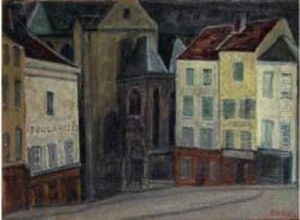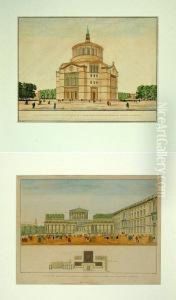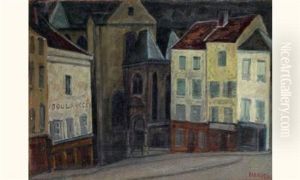Eduard Johann Aug. Mandel Paintings
Eduard Johann August Mandel, a German artist primarily recognized for his contributions as a lithographer and painter, was born in 1810 and passed away in 1882. Mandel's artistic journey began in his native Germany, where he nurtured his talents and developed a style that was both distinctive and reflective of the broader movements within European art during the 19th century. His work, although not as widely renowned as some of his contemporaries, provides valuable insights into the artistic and cultural shifts of his time.
Mandel's oeuvre is characterized by its diversity, encompassing both lithography and painting. In the realm of lithography, he was known for his meticulous attention to detail and his ability to capture the essence of his subjects with remarkable clarity. This medium, which involves creating images on limestone or a similarly treated surface to produce prints, was a popular form of artistic expression during the 19th century, and Mandel's contributions to it were significant. He embraced the technical challenges of lithography, experimenting with various techniques to enhance the depth and realism of his works.
As a painter, Mandel's style was influenced by the Romantic movement, which emphasized emotion, individualism, and the sublime beauty of nature. His paintings often depicted landscapes and scenes of everyday life, imbued with a sense of tranquility and a keen observation of light and shadow. These works reflect Mandel's fascination with the natural world and his desire to capture its fleeting moments with honesty and sensitivity.
Throughout his career, Mandel remained relatively obscure in the broader European art scene, overshadowed by more prominent figures of his time. Despite this, his artwork has garnered appreciation among art historians and collectors who recognize the skill and depth of his lithographs and paintings. Mandel's legacy lies not only in the beauty of his creations but also in his contribution to the development of lithography as a respected art form.
Mandel's life and work remain a subject of interest for those studying the evolution of lithography and the diverse artistic expressions of the 19th century. His dedication to his craft and his ability to convey the subtleties of the natural and human-made world continue to inspire admiration and respect. In the context of art history, Eduard Johann August Mandel occupies a niche that underscores the importance of recognizing the varied contributions of artists who may not have achieved widespread fame but whose work significantly enriches our understanding of the past.


